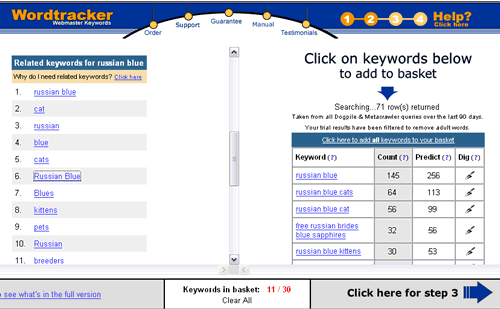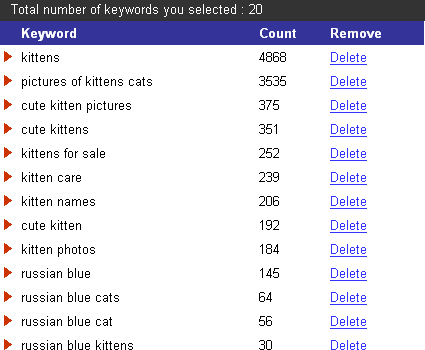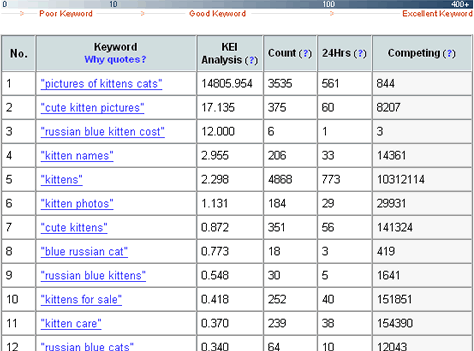Last Updated on April 20, 2020
This post is part of the Internet Marketers United Group Writing Project, organized by Courtney Tuttle.
 What do you do when you need an information? If you have an internet connection, it is most probable that you’d use a search engine, where you’d ask your question in the most relevant way possible, so you get the desired answer on the first page with results.
What do you do when you need an information? If you have an internet connection, it is most probable that you’d use a search engine, where you’d ask your question in the most relevant way possible, so you get the desired answer on the first page with results.
Like you, millions of people out there search every single minute answers to their questions. Put in the position of the one who writes content for the web, how can you make sure your information is wanted by users?
If you wrote about how to give a haircut to a porcupine to make it look like a squirrel, you probably have no potential readers. What if you wrote about Britney Spears and her latest driving incident?
For the porcupine stuff, you’d probably rank first very easily, but that would be useless, since there is no demand on the market for such an information. For the Britney Spears incident, you’ll find yourself competing with millions of pages, all of them aiming a place within the first 10 search results for that query. Although there is a huge demand, you cannot reach your customers, because you are suffocated by all those competitors having the same desire: make the searching person click on their link.
How can you discover which are the best keywords to use in your articles, in order to secure yourself some traffic from search engines? Let’s see:
1. Make yourself a list of keywords related to your blog’s topic.
Helpers at this stage: Google Hot Trends, Free Keywords Wordtracker, Google AdWords keyword tool, Overture keyword selector tool. If you want a tool which gathers information from many other tools, you can try the SEO Book Keyword Suggestion Tool.
2. Investigate your competition. If you used the SEO Book Keyword Suggestion Tool, you see that it includes links to search engines queries, so you can find out easily how many sites are chasing that keyword.
The Keyword Effectiveness Indicator (KEI)
How can one balance between popularity and competition, in such a way that ranking in top 10 results in the main search engines could be easily achieved?
The very best keywords you want to find have high popularity (many searches), and low competition (they do not appear on a large number of pages). This relationship is represented by the Keyword Effectiveness Indicator, most known as KEI.
KEI is a logarithmic scale that aims to quantify the effectiveness of any search term.
Wordtracker gives a simple explanation for KEI:
If a keyword becomes more popular and more competitive at the same time such that the ratio between its popularity and competitiveness remains the same, its KEI should increase. The rationale behind this axiom requires a more detailed explanation. The best way to do this is to take an example:
Suppose the popularity of a keyword is 4 and AltaVista displays 100 sites for that keyword. Then the ratio between popularity and competitiveness for that keyword is 4/100 = 0.04.
Suppose that both the popularity and the competitiveness of the keyword increases. Assume that the popularity increases to 40 and AltaVista now displays 1000 sites for that keyword. Then the ratio between popularity and competitiveness for that keyword is 40/1000 = 0.04.
For the sake of the example, I subscribed for a free trial with Wordtracker, and I researched the keyword “russian blue”, plus the derivates Wordtracker indicated, including kittens photos (because I have a Russian Blue kitten available for unlimited photosessions).
If for some reasons you want to use an alternative to Wordtracker, you can try KeywordDiscovery.com Keyword Research Tool, which is also a good and easy to use option, not free, but providing you one month of free trial, so you know what you get for your money.
You’ll see below a few illustrations from the process:



As you can see from the last table above, we’ve found three keyphrases which have a KEI above 400 (this is an indicator that the ratio between the number of searches and the number of competitors is in our favor): “pictures of kittens cats”, “cute kitten pictures” and “russian blue kitten cost”.
Due to the low number of searches, we can eliminate the last one, although it has only 3 competing sites (remember the porcupine?).
With “pictures of kittens cats”, it seems we’ve striken a gold mine, with 561 searches in 24 hours and with only 844 competing sites.
Conclusion: for my article about kittens photos, I’m going to optimise the page for “pictures of kittens cats”, which would bring me in the top SERPs much faster, and which would bring me much more traffic than the keyword “kitten photos” which I had in mind for this post, and which has only 29 searches per day.
So said and done, stay tuned to read my article on “pictures of kittens cats” which I’m going to write as part of the 1001 Cats Blog Carnival. I host this carnival here every two weeks, and it already contains lots of cute pictures of kittens cats, so the new article would perfectly fit on the topic.
How do you research keywords for your articles?




This is a really creative idea. Show exactly what tools to use for the best keywords. Once you’ve narrowed the selection show the visitors how to use it. Wow, great article!
Thanks Alex. Wordtracker is very useful, even in its free version.